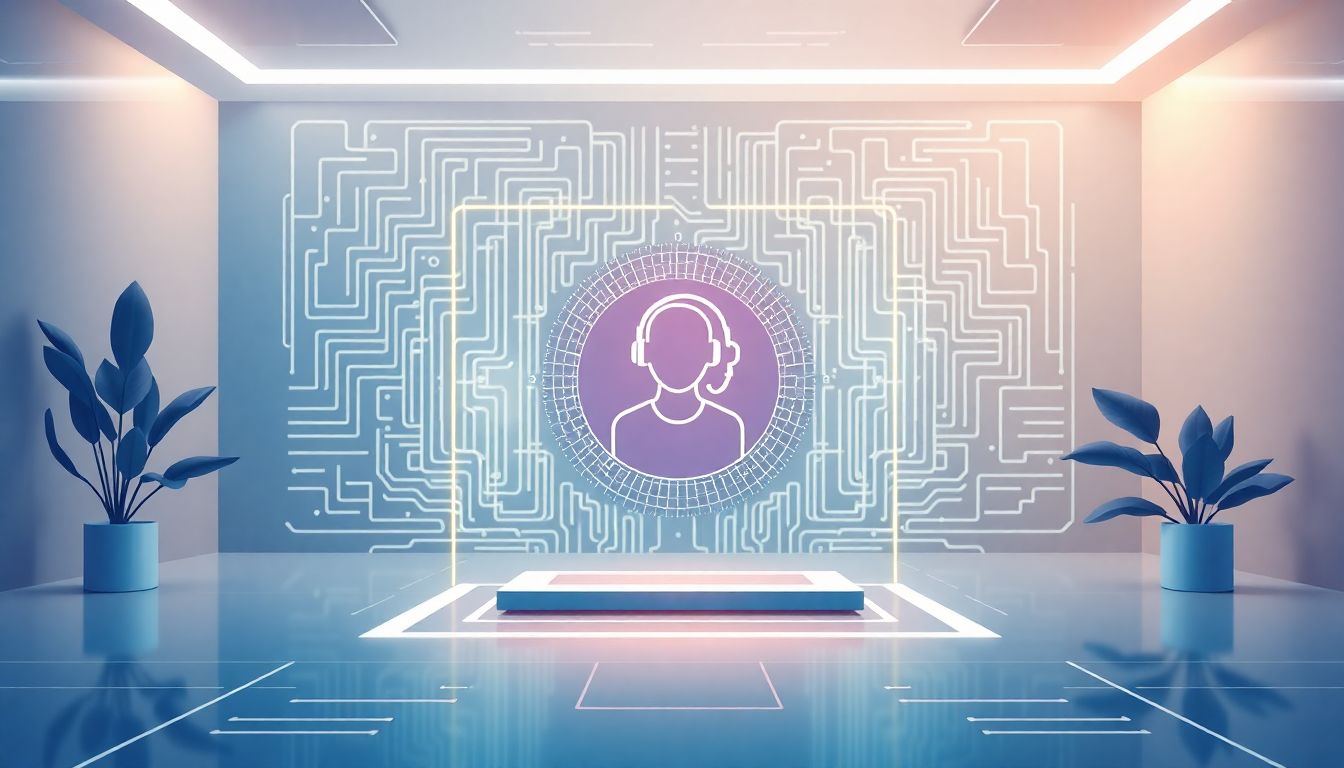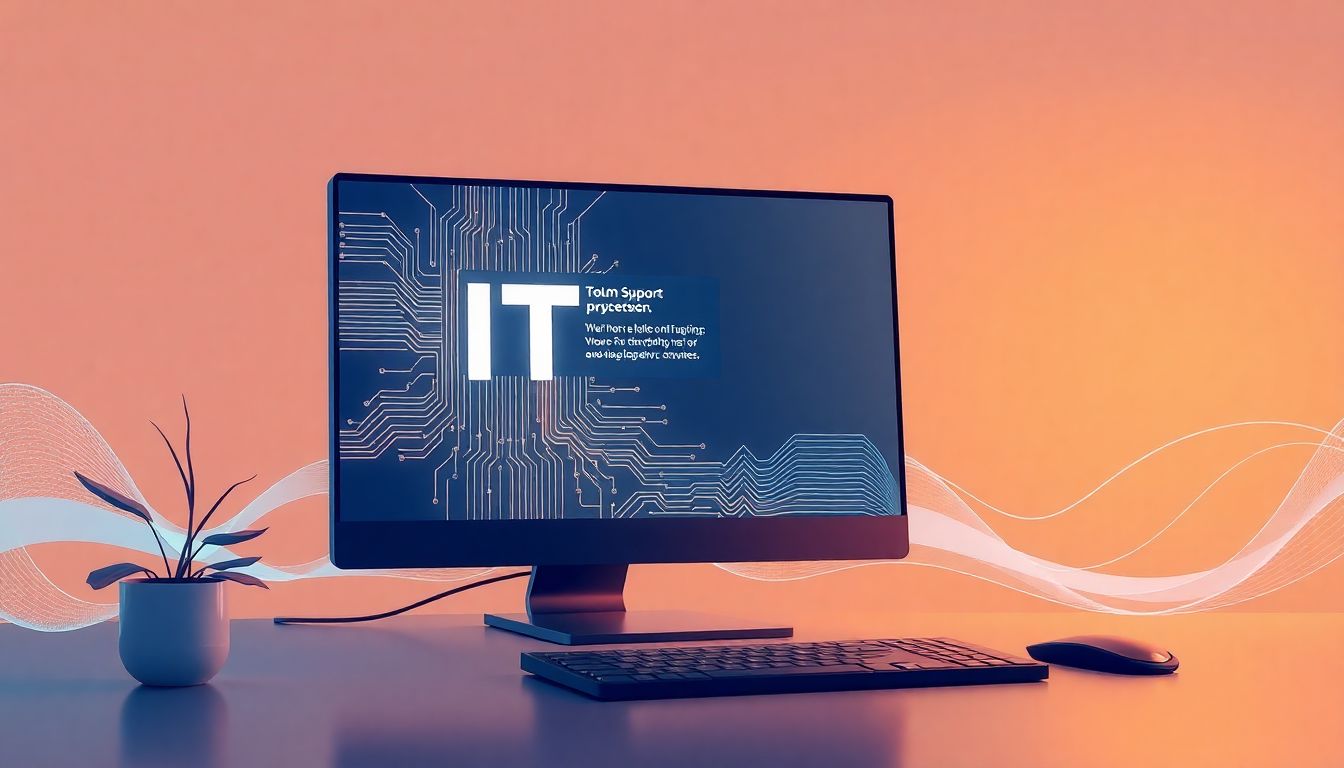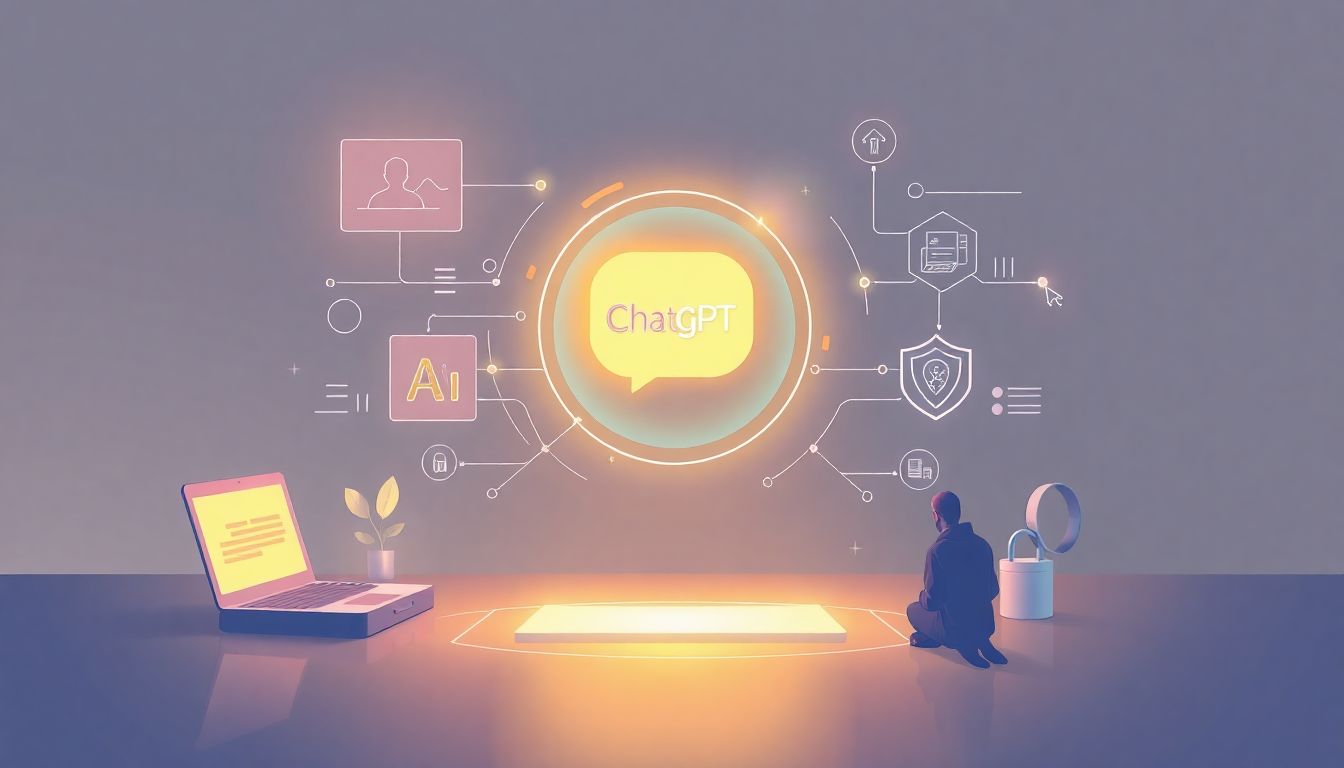IT support can sometimes feel like a never-ending maze of tech jargon and frustrating hold music, right? You’re not alone if you’ve ever wished for a faster, more intuitive way to get help with your tech troubles. The good news is that innovation is here, shaking things up in the IT world.
Imagine having a smart assistant that understands your issues and provides solutions almost instantly. Stick with me, and I’ll show you how ChatGPT-driven solutions are transforming IT support, making it more accessible and efficient than ever before.
We’ll explore the benefits, real-life examples, and even some tips to make the most out of ChatGPT in your IT environment. Get ready to revolutionize your support experience!
Key Takeaways
- ChatGPT revolutionizes IT support by providing quick, accurate assistance, improving user interactions, and streamlining operations.
- The technology is available 24/7, enhancing customer satisfaction with faster response times and cost savings.
- Common uses include automating ticket resolutions, retrieving knowledge base info, and guiding users through troubleshooting steps.
- To integrate ChatGPT, assess current systems, use APIs, and train staff for a smooth transition alongside human support.
- Effective prompts significantly enhance ChatGPT’s responses, such as specifying context, asking for step-by-step guides, and requesting clear summaries.
- Real-life examples show measurable improvements in response times and customer satisfaction after deploying ChatGPT in IT environments.
- Challenges include potential inaccuracies and user trust issues, necessitating human oversight to complement AI assistance.

How ChatGPT is Changing IT Support Services
ChatGPT is transforming IT support by enhancing how organizations interact with users and resolve issues.
Using AI-driven conversational tools, companies can now provide quicker, more accurate assistance.
This shift is redefining traditional IT support roles and streamlining operations.
The impact of ChatGPT on IT support is evident in increased automation and better customer service experiences.
By leveraging machine learning, ChatGPT can learn from interactions, improving responses over time.
As more businesses adopt these AI-driven systems, the evolution of tech support is becoming more dynamic and user-friendly.
Benefits of Using ChatGPT for IT Support
One of the main advantages of ChatGPT in IT support is its 24/7 availability.
This means users can get help any time, which leads to improved customer satisfaction.
Moreover, ChatGPT can handle multiple inquiries simultaneously, boosting efficiency.
Companies are also seeing cost savings since AI can reduce the need for extensive human support teams.
Faster response times lead to better user experiences, making it essential for any IT service strategy.
Common Use Cases for ChatGPT in IT Support
There are several practical applications for ChatGPT in IT support.
For instance, it can assist with ticket resolution by extracting relevant information from users and creating tickets automatically.
Another use case is knowledge base retrieval, where ChatGPT retrieves information from a database to answer user queries effectively.
It can also automate responses to frequently asked questions, saving time for IT staff.
Additionally, ChatGPT proves beneficial in troubleshooting by guiding users through common issues step-by-step.
Integrating ChatGPT into Existing IT Support Systems
Integrating ChatGPT with your current IT support system doesn’t have to be daunting.
Start by assessing your existing infrastructure and identifying areas where ChatGPT can add value.
Employ APIs for seamless interaction between ChatGPT and your current tools.
It’s important to train your staff on how to effectively use AI tools to improve their workflows.
Consider creating hybrid support models, combining human expertise with AI efficiency for optimal performance.
The goal is a smooth implementation that enhances user experience without disrupting existing processes.

Tips for Effective ChatGPT Prompts in IT Support
Getting the most out of ChatGPT starts with crafting effective prompts.
Clear and specific instructions can significantly enhance the quality of responses.
Here are some tips to keep in mind:
- Use direct commands: Instead of saying, “Can you help with network issues?”, try “List common network issues and their solutions.”
- Be specific about context: Specify details such as the type of software or hardware involved. For example, “Explain how to configure Wi-Fi on Windows 10.”
- Ask for step-by-step guides: For troubleshooting, prompts like “Guide me through resolving a printer connectivity problem” can yield structured responses.
- Include user role or background: This helps tailor the response. For example, “As an IT admin, what should I do if users can’t log in?”
- Request examples or scenarios: This gives a practical layer, e.g., “Provide a scenario where ChatGPT can resolve a helpdesk ticket.”
- If seeking a summary, state it clearly: Such as, “Summarize the process of updating software on a corporate network.”
Here are some effective prompts you can copy and paste:
- “What are the steps to troubleshoot slow internet connectivity?”
- “List troubleshooting steps for a computer that won’t start.”
- “Explain how to reset a password for a user account in Active Directory.”
- “Describe the process to set up a VPN connection on macOS.”
- “Provide tips for securing a home Wi-Fi network.”
By applying these tips and using these prompts, you’ll enhance your engagement with ChatGPT.
This leads to better support outcomes and a smoother user experience.
Real-life Examples of ChatGPT in Action for IT Support
Seeing ChatGPT in action can help you grasp its practical benefits in IT support.
Here are a few compelling case studies:
Company A integrated ChatGPT into their IT helpdesk, resulting in a 30% reduction in response times.
They used ChatGPT to handle repetitive inquiries, allowing human agents to focus on complex issues.
Company B relied on ChatGPT to manage their ticketing system, streamlining how tickets were created and assigned.
This led to a significant improvement in ticket resolution times, with users noting higher satisfaction levels.
In another instance, Company C employed ChatGPT to enhance their knowledge base.
Users now receive accurate answers from the AI, reducing the amount of time spent searching through documentation.
Customer testimonials highlighted the perception of responsiveness and efficiency after integrating AI.
These examples emphasize the tangible improvements ChatGPT can introduce in IT support.
Whether it’s reducing wait times or improving ticket management, the impact is measurable.
Potential Challenges and Limitations of ChatGPT in IT Support
While ChatGPT offers many advantages, it’s important to recognize its challenges and limitations too.
One major concern is the accuracy of information provided by the AI.
There may be instances where ChatGPT misinterprets a query, leading to incorrect guidance.
This can create frustration for users who rely on accurate information for troubleshooting.
Another limitation is understanding nuanced or complex scenarios.
ChatGPT can struggle with context, especially if questions are ambiguous or lacking detail.
Additionally, user trust can be a barrier.
Some users may hesitate to depend on AI for tech support, fearing it lacks the human touch.
Another challenge lies in keeping the AI updated with current information.
As technology evolves, continuous updates are necessary for accurate responses.
Companies should be mindful of these limitations and have strategies to address them.
Human oversight is crucial to complement AI assistance and ensure the best user experiences.

Future Trends for ChatGPT in IT Support Services
The future of ChatGPT in IT support is promising and set to incorporate several exciting trends.
One trend is the continued focus on personalization, enabling ChatGPT to tailor responses based on user behavior and preferences.
As AI technology advances, ChatGPT will likely utilize predictive analytics to foresee issues before they arise.
Imagine ChatGPT alerting IT teams about potential system downtimes based on historical data!
Integration with other emerging technologies, like IoT and machine learning, will further enhance its capabilities.
Collaboration between AI and human staff is expected to grow, leading to more efficient workflows.
Additionally, organizations will prioritize cybersecurity, integrating AI solutions that can detect and respond to threats in real-time.
Sustainability will also become a key focus, as companies seek to leverage AI to reduce their carbon footprint.
Overall, ChatGPT will play an increasingly vital role in crafting responsive, agile IT support environments.
FAQs
ChatGPT can provide instant responses to common IT queries, significantly reducing the time support agents spend on routine issues. This allows human agents to focus on more complex problems, improving overall response times.
ChatGPT can assist with a variety of IT issues, including password resets, software troubleshooting, and common tech FAQs. It is particularly effective for repetitive queries that do not require complex human intervention.
Organizations might face challenges such as ensuring proper data privacy, training ChatGPT to understand specific company contexts, and managing user expectations regarding the limitations of AI responses.
To optimize ChatGPT prompts, organizations should use clear and specific language, include contextual information, and define desired outcomes. This helps in generating relevant and accurate responses tailored to user needs.
